Nangan, Formosa's talisman
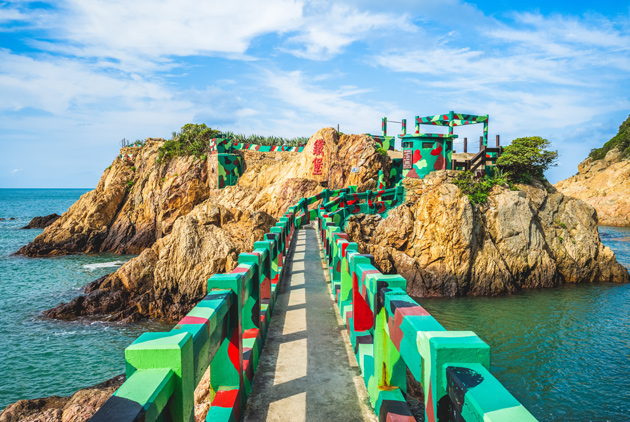
Source:Shutterstock
Nangan Township is a rural township in the Matsu Islands, which consist of an archipelago of 36 islands and Nangan is the largest. Littered with ruins of forts and stone houses, parts of Nangan look mysterious.
Views
Nangan, Formosa's talisman
By Elsa Lycias Joelweb only
Largest in the Matsu
Houses numerous mysterious ruins
Charm never bids adieu
Blue tears, no sufferings
Mornings, a yellow glow
Nights, a stupendous sapphire
Oar boat I row
Beihai Tunnel, a beautifier.
From atop the Yuntai
I see lantern lights
Romantic stroll, aye aye
Jinsha shimmers and delights
Island hoppers stands still
Marvelling at marvelous Mazu
Her blues, her self-will
Daughter's love, fresh dew.
I taste all wines
Walk through fascinating tunnels
Chung-cheng, his good times
88 years, possibilities limitless.
Ooh, warm in winter
Gwuf-gwuf, all 273 meters
Aah, cool in summer
Aroma of life matters
Caves and caverns teaches
The most important allegories
Low tides favours us
High tides no worries
Battles, big and small
Bloodshed and tears wept
Wanan drill, soldiers' call
Shengli Fort never slept.
Here, sleeping on spears
Warriors await the dawn
Yea, overcoming all fears
Fuqing Hill's pride, Jhengedaidan
Dahan strongpoint, her strength
Serene boundaries, loud cannon
Iron fort, Nangan's intent
Majestic strongholds, oh man!
Elsa Lycias Joel
I stanza
Nangan Township is a rural township in the Matsu Islands. Yes, Nangan is an island in the Matsu region of Taiwan. Actually speaking, Matsu Islands are an archipelago of 36 islands and Nangan is the largest. Littered with ruins of forts and stone houses, parts of Nangan look mysterious. From May to September annually, tourists flock to see the blue tears, a bioluminescent phenomenon in the oceans due to the presence of an algae called noctiluca scintillans. Blue tears is one of the world’s “15 natural wonders.”
II stanza
 (Source: Shutterstock)
(Source: Shutterstock)
 (Source: Mazu National Scenic Area Administration)
(Source: Mazu National Scenic Area Administration)
Beihai tunnel in Nangan is the biggest tunnel in Matsu. During mornings, the rocks glow in yellow light and at night times the waters glow blue due to the algae. Lighting inside the tunnel is kept off when visitors enter at night so that the only light comes from the glowing algae, which become visible when the water is disturbed by paddles or oars.
III stanza
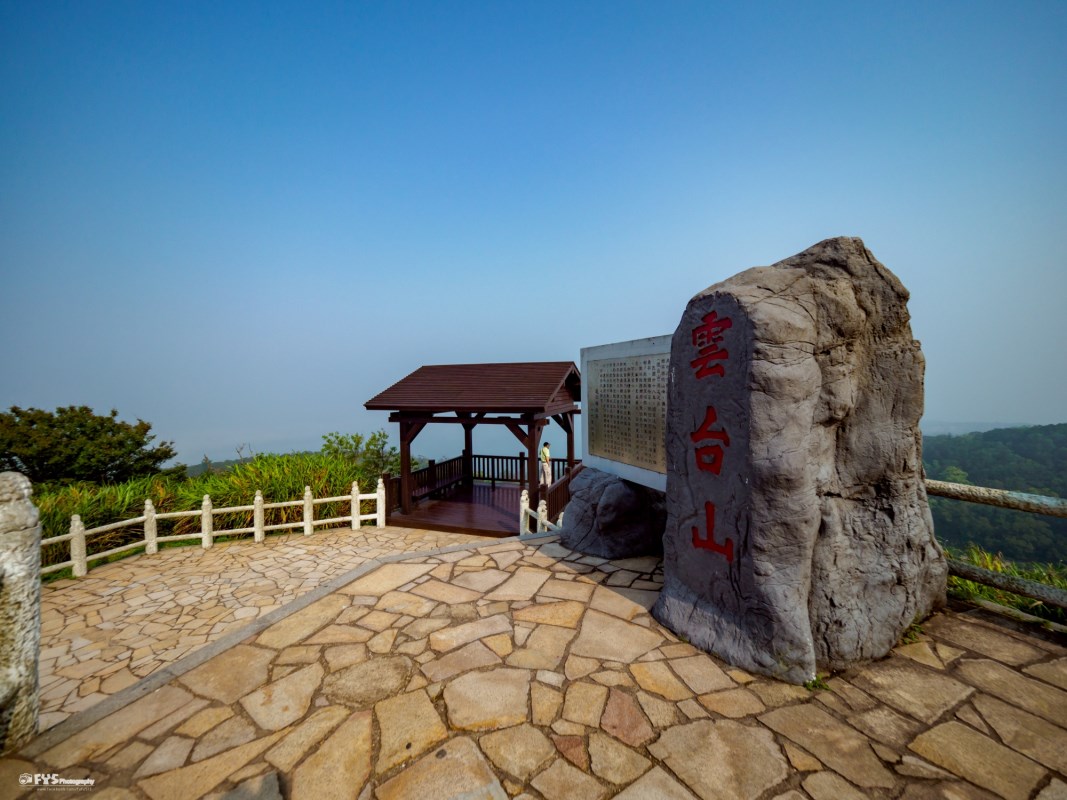 (Source: Mazu National Scenic Area Administration)
(Source: Mazu National Scenic Area Administration)
Yuntai Mountain is Nangan’s highest peak. From atop, probably we can see the warm lantern lights turned on by the Nangan Jinsha Tribe after the sun set and take a romantic stroll. Jinsha in Taiwanese means Gold sand. Nangan island has golden sand beaches. Jinsha delights can mean 2 different things. It could be the beaches or the people.
IV stanza
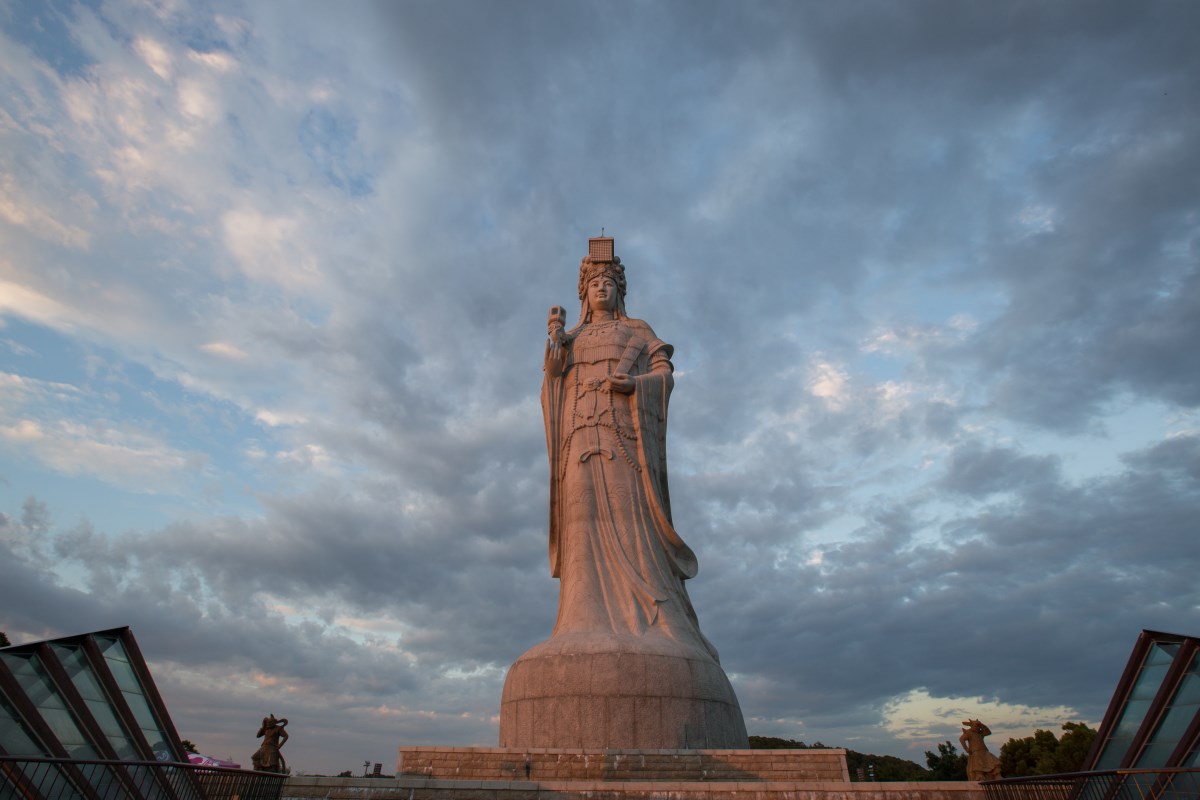 (Source: Mazu National Scenic Area Administration)
(Source: Mazu National Scenic Area Administration)
Usually tourists go Island hopping. The poet says that once they get a glimpse of Mazu, the sea goddess people freeze in her beauty and elegance. There are several legends about her "death" and how she turned into the goddess. The most frequently-told story reads that she sacrificed her life to save fellow town people who met with a thunderstorm while fishing out at sea. So people created statues in honor of the virtuous and kind woman and worshiped her like a goddess – a holy symbol of mercy, kindness and compassion. But the poet liked the version that says Mazu sacrificed her life to rescue her father. And the poet assumes Mazu would‘ve had her share of blues yet her self will to recue her daddy remained. Thus, daughter's love is like a fresh dew which is synonymous with fresh, pure, or renewing.
V stanza
 (Source: Mazu National Scenic Area Administration)
(Source: Mazu National Scenic Area Administration)
This is about an old tunnel that has been converted into a storage place for large jugs of fermenting wine.There are also large fermenting tanks inside.A strong smell of fermenting wine permeates the tunnel. It's named tunnel 88 to commemorate the 88th birthday of President Chiang Kai-shek in 1975. Chiang Kai-shek (31 October 1887 – 5 April 1975), is officially known as Chiang Chung-cheng. As a soldier and statesman, head of the Nationalist government in China from 1928 to 1949 and subsequently head of the Chinese Nationalist government in exile on Taiwan, Chiang Kai-shek wouldve had his good times and endless possibilities too. The tunnel goes through the strong granite rock which is said to have been used as a cave for residents to hide away from pirates in times gone by.
VI stanza
The tunnel is warm in winter and cool in summer, with the temperature averaging between 15-20℃. 88 tunnel is 273 meters long. gwuf, gwuf, gwuf sound of footstep ("Pedro and the padre", by Verna Aardema). Aroma of wine means more than just a drink.
VII stanza
Caves and caverns teach us a lot, don't they? About climate change, past lives, how we have evolved. More than anything, the poet is reminded of caves and allegories. One of the most important allegories ever to be gifted to humankind is Allegory of the Cave. Plato’s Allegory of the Cave is one of the most potent and pregnant of allegories that describe human condition in both its fallen and risen states. That is, the human existence in its most profound and profane states. As there is a wonderful Islamic saying that parallels this: “the human being can ascend to such heights that even the angels will become jealous of him or will descend to such realms that even the devil flees from him.”
Nangan’s Nanhai Tunnel, a series of four crisscrossing tunnels tracing a design like the Chinese character jing (井) can fit inside 120 army boats, hidden safe from Mainland Chinese eyes (and bombs). More graphically, if the tunnels were drained, several good-sized English cathedrals could easily fit in each of the four mighty tunnels: it seems they’re absolutely huge holes. A raised walkway goes right round the outside edge of the four tunnels, and takes a full 20-30 minutes to complete, if the sea cooperates. At high tide the walkway is covered by several feet of water, and it only emerges several hours after the turn of the tide. That's why the poet says Low tides favours us, High tides no worries". Low tides favours the tourists visiting the tunnel.
VIII Stanza
Through battles, bloodshed and tears, forts never slept. It's the poet's way of saying that the soldiers at the fort kept watch and fought, come what may. Soldiers' valour is to be praised. The Matsu Islands used to be an archipelago of the Chinese mainland, but they became the frontline between China and Taiwan in 1949 after the Kuomintang withdrew to Taiwan. The coastline of Matsu is facing the Chinese Mainland and therefore covered with military bases and fortresses to prevent the Chinese army from landing. Hence drills are still carried out to keep the soldiers prepared. Wanan drill takes place in the Yuntai mountain, the highest point on Nangan Island. The drill isn’t just some publicity stunt but a very serious and important exercise to raise the awareness of defense.
IX Stanza
 (Source: Mazu National Scenic Area Administration)
(Source: Mazu National Scenic Area Administration)
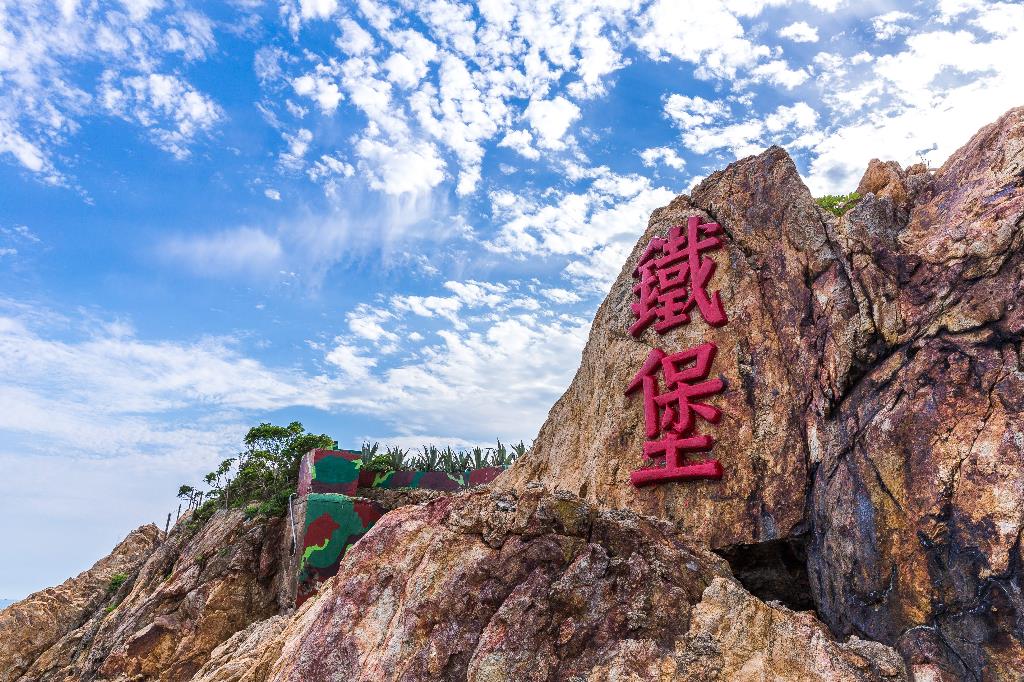 (Source: Mazu National Scenic Area Administration)
(Source: Mazu National Scenic Area Administration)
Jhengedaidan in Taiwanese means "Here". During his visit to Matsu in 1958, former President Chiang Kai-Shek wrote the phrase Sleeping on Spears, Awaiting the Dawn to encourage the soldiers. The phrase was then carved on the Fu Mountain (Fushan) Wall by soldiers and became the most visible landmark in Matsu. With four large characters in bright red “Zhenge Daidan” is written on the high-rising Fuqing Hill of Nangan.
X stanza
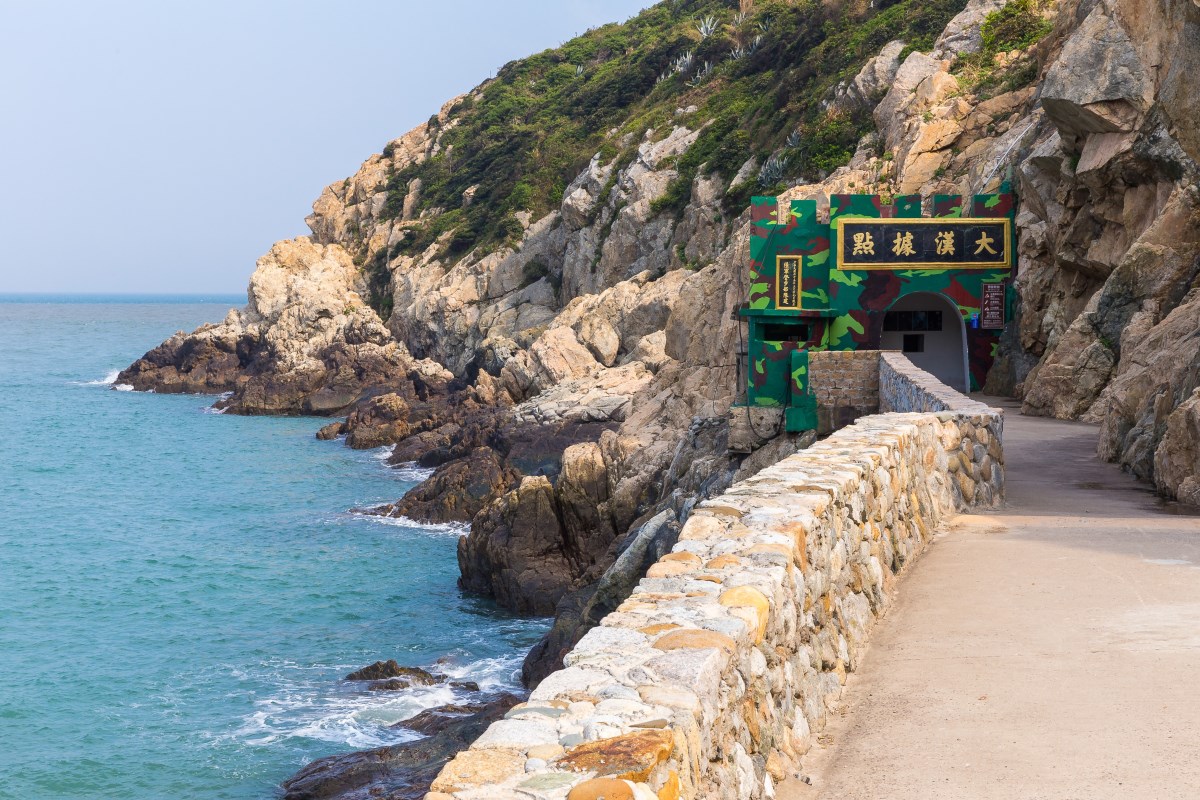 (Source: Mazu National Scenic Area Administration)
(Source: Mazu National Scenic Area Administration)
Dahan strongpoint, a fortress is Nangan's strength and one of the most extensive and well preserved underground bunker/tunnel base system. At the Cannon base, there is one of the preserved cannons used ever so minimally by the KMT. At the time these canons were a true source of might and was in part how KMT fended off Mao from Taiwan.
KMT
The KMT was the dominant ruling party of the Republic of China on the mainland from 1928 to 1949. In the 1950s, the party, defeated in the Chinese Civil War, was exiled from the mainland and became the ruling party of Taiwan.
The cannon can be loud but today, the well guarded boundaries are serene.
Iron fort is another bunker/ military stronghold. Formerly it wasn't connected to land. Because of the location’s difficult terrain and important strategic position, it was developed into a military base, with the middle of the sea rock excavated out to form a tunnel. Inside the tunnel there are canons, murder-holes, accommodation facilities, toilets, and a kitchen.
Literally everything is there, it is a well-equipped fort for coastal defense. While the sea rock is covered with broken glass to act as a deterrent against air landings, the many tourists that come and go take the chill of wartime and death off the air. Nowadays, Iron Fort is a wonderful place for experiencing wartime culture and the view of the ocean with the sea breeze in your face.
About the author:

Elsa Lycias Joel holds a doctorate in Biotechnology and writes for The Delhi Press among other newspapers and magazines. She has a keen interest in Sociocultural, Environmental, and Health challenges facing humanity especially women and children.
Have you read?
♦ Tainan Sinhua Old Street: Turning a Century-old Neighborhood into a Museum Without Boundaries
♦ This American Adventurer’s Map of Taiwan Has 230K Followers
Uploaded by Penny Chiang






